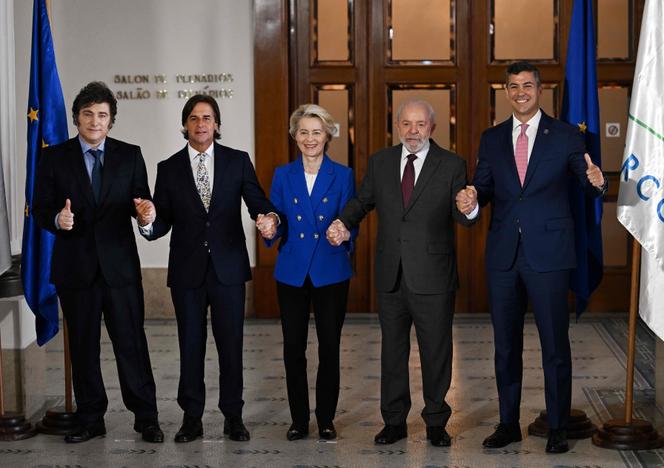


The European Union and the Mercosur group of Latin American countries have agreed to terms for a long-anticipated free trade deal, European Commission President Ursula von der Leyen announced Friday, December 6, in Uruguay's capital of Montevideo.
The EU-Mercosur deal aims to create one of the largest free trade zones in the world, covering over 700 million people and nearly 25% of global GDP. Its goal is to reduce tariffs and trade barriers, making it easier for businesses on both sides to export goods.
Mercosur comprises Brazil – the lion's share of the bloc's territory, economic output and population – along with Argentina, Paraguay, Uruguay and Bolivia, the newest member. Venezuela's membership has been suspended indefinitely.
While negotiations have concluded, the EU-Mercosur deal still needs to be greenlit by at least 15 of the European Union's 27 member nations representing 65 percent of the EU population.
France, which has been rocked by successive protesters by farmers saying the agreement would bring unfair competition, has tried to forge a blocking minority of EU countries. French President Emmanuel Macron on Thursday had repeated a warning to von der Leyen that the agreement was "unacceptable in its current state."
Poland has rallied to France's side, and Italian government sources say Rome believes "the conditions are not met" to back the deal. The Netherlands and Austria have also expressed reservations. But Germany, desperate to open more trade opportunities amid gloom for its manufacturing sector, had strongly come out in favor of the EU-Mercosur deal, as had Spain.
In remarks aimed at her "fellow Europeans," and perhaps those more skeptical like farmers in France and elsewhere, von der Leyen said it would have a positive impact on around 60,000 companies that export to the Mercosur region. She said they will "benefit from reduced tariffs, simpler customs procedures and preferential access to some critical raw materials. This will create huge business opportunities."
"And to our farmers," she said, "we have heard you listen to your concerns, and we are acting on them. This agreement includes robust safeguards to protect your livelihoods."
Reaching a deal has been a protracted process, dating back to a summit in Rio de Janeiro in 1999. Negotiations quickly stalled due to different economic priorities, tariffs, regulatory standards and agricultural policies on both sides of the Atlantic Ocean. For about a decade, the EU sought to protect its agricultural sector while Mercosur aimed to increase access to its agricultural products.
Some momentum came after 2010, when both sides focused on eliminating tariffs, though issues for agriculture remained. The peak of that movement was a political agreement in June 2019, when negotiators announced a deal that included provisions for tariff reductions and commitments to environmental standards.
Since then, the two sides have struggled to ratify a deal. European concerns over deforestation in the Amazon, particularly during the Jair Bolsonaro presidency in Brazil until the end of 2022, held up an agreement.
Left-wing President Luiz Inácio Lula da Silva, Bolsonaro's successor, initially opposed an agreement more than two decades ago. But since returning to power in 2023, his administration has pushed for progress. "After more than two decades, we have concluded negotiations on the agreement," Lula wrote on social media platform X.
The outgoing government of Argentina, the bloc's second-biggest economy, opposed the agreement, but President Javier Milei who took office last year has supported a deal.
